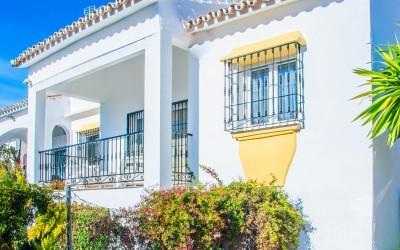
There is no food considered to be more quintessentially Spanish than paella. It is an easy one-pot dish that is incredibly simple to make, provided you can follow the strict Spanish recipe. Paella is made in hundreds of countries around the world, but often extra ingredients are added, or essential ingredients missed. So much so that you may be left feeling unsure about what a traditional and authentic paella should look like.
So, what is paella? And what ingredients should you avoid including in the dish? Here’s everything you need to know about paella:
What is Paella?
Paella is a traditional Spanish dish that originated from Valencia and in November 2021 it was granted protected status in the region for its key cultural significance. In the wider world, Paella is considered to be the national dish of Spain but in the country itself it is considered a Valencian dish.
Paella gets its name from the Valencian word for frying pan. Paella is prepared in a traditional paella pan which is round, shallow, wide. It has a short handle on either side. Paella is also popular in the other rice-growing areas of Spain's Mediterranean coast. This is because Paella was originally farmers' and farm labourers' food, meaning that it contained cheap and easily accessible ingredients. The dish was cooked by farm workers over a wood fire for the lunchtime meal.
Whilst you can order paella across Spain, you will find it in most restaurants in the Valencian region due to it being the official dish of the region. Paella is as popular throughout the world as it is in Spain, but in other countries extra ingredients are often added, meaning that paella as you know it may not be true to the original Spanish recipe.
This is something that British chef Jamie Oliver knows only too well: When he included a recipe for his version of paella on his website in 2016, he received criticism and even death threats for including ingredients that veered from the traditional recipe, particularly chorizo. One commenter wrote on the post: “Remove the chorizo. We don’t negotiate with terrorists. First warning.” This incident was referred to as ‘Paella gate’ and went on to make international headlines. The reason? Because many Valencians are sick of their beloved region dish being cooked in a way that doesn’t honour the original recipe.
The Valencian government and tourism board have worked hard to ensure that paella in the region is served correctly and that the recipe is protected. They do this to protect the dish from “the distortions that could result from mass tourism” and to safeguard “traditional professions” associated with paella-making. So, what is the original recipe? And what ingredients are commonly included in Paella in the UK and other European countries that have no place in a traditional Valencian paella?
10 Ingredients to Avoid in Traditional Spanish Paella
If you want to prepare an authentic paella, just like you would find served in a Valencian restaurant, then you should avoid including any of the following ten ingredients:
Chorizo: A traditional Spanish ingredient, but one that has no place in paella. This is the ingredient that dropped Jamie Oliver in hot water when he included it in his paella recipe, and should not be included in the dish.
Peas: Many recipes will put peas in paella to add colour to the already vibrant dish, but actually this is considered a big no-no. Instead traditional paella will use green beans or butter beans to add the same texture.
Onion: Most Spanish recipes call for a fried onion as the basis of the dish, but paella isn’t one of them. Don’t add an onion to your paella.
Mixing meat and seafood: Are you making a meat paella or a seafood paella? Make a choice now, because traditional paella never combines both of the ingredients. Choose between one or the other.
Beef: Whilst you can make a hearty meat paella, that meat should never be beef! Chicken, duck, rabbit and even pork are all regularly included in traditional paella but beef is never on the menu.
Carrots: Even if you’re making a vegetarian paella, that doesn’t mean there’s any reason to deviate from the original recipe and add extra vegetables. Carrots, mushrooms, or any other extra vegetables are not welcome in a traditional paella.
Stock: It might speed up the cooking time, but no true Spaniard would use ready-made stock in their paella recipe. Instead, they would make their own stock from scratch, using water, herbs and spices.
Food colouring: The rich colour of Spanish paella comes from the saffron it contains. If you can’t get your hands on saffron then you may be tempted to use yellow food colouring as a substitute, but any Spanish dinner guest would notice right away!
Wrong rice: Avoid long-grain rice like basmati and if possible try to get your hands on bomba, bahía or sénia rice. These are the best kinds of rice for paella, and the types a Spaniard would use.
Are you thinking of living in Spain? Perhaps you like the idea of submerging yourself into the traditional Spanish lifestyle and cooking Spanish recipes every day? Whatever your dream, we can help. Why not get in touch with our team of local property experts today, to find out more about how we can help you.

 English
English Español
Español Deutsch
Deutsch Français
Français Svenska
Svenska Nederlands
Nederlands Italiano
Italiano Norsk
Norsk Русский
Русский

































